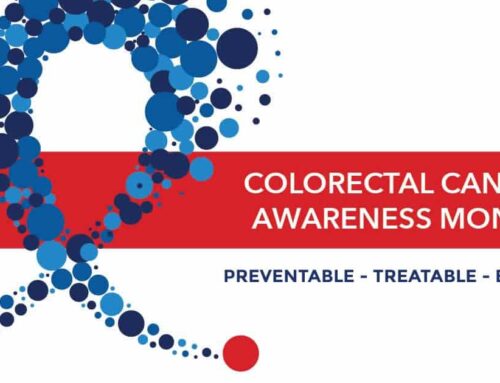This pandemic is affecting all of us in different ways. Some are enjoying the extra family time and keeping their employment, while others find themselves feeling like they’re drowning and uncertain of the future. Neither is right or wrong. Though they’re at the opposite ends of the spectrum, both are valid feelings and concerns.
Anytime life changes, it can make you feel antsy, or a bit stressed. But for all of us, life hasn’t just changed a little bit — it’s changed drastically. So while you can’t escape this current situation, you can implement some practical approaches for adjusting to life during the pandemic.
Today we’ll dig into this by discussing some practical approaches you can take to shifting into life during a pandemic. Specifically, I’ll lay out three techniques I personally use to stay calm and reduce stress levels that you can implement too. If you’d like to learn more, check out my podcast episode on the COVID-19 Files: Moving On with Life.
#1 STOIC PHILOSOPHY
The first way I turn my anxiety down is by utilizing the stoic philosophy to skillfully avoid negative emotions. Now, this doesn’t mean ignoring your emotions. It means not worrying about things that are outside of your control. Easier said than done, right?
Well, it can be if you think of it like this. You have a logical brain and a reptilian brain. Your reptilian brain, which wants to protect you from dangers like getting killed. The problem is that not every encounter you have is quite this serious, no matter what your reptilian brain is trying to tell you.
Then you have your logical brain that’s trying to let you know it’s okay. It uses logic to decide if a situation is safe, while your reptilian brain is throwing you into a fight or flight response. If you can get your reptilian brain to calm down, your logical brain will have a chance to take over.
The goal of using the stoic philosophy is to reframe your responses and reactions by stepping back and acknowledging the emotions that make you feel stressed or anxious so you can take control of the situation. I really like Ryan Holiday’s stuff at The Daily Stoic to help me stay logical and find new stoic techniques to try.
The reality is that in any given situation, you have about five seconds to reframe a situation to get control of it. The secret is to avoid reacting immediately and instead take a timeout for five seconds to reassess your situation. There are two key techniques to help you do this.
Framing
Framing means giving yourself five seconds to let your anger and frustration out. Scream, yell, curse, whatever you need to do, but for no longer than five seconds. Longer than that and the emotion gets out of hand and is difficult to control. Next, immediately frame those initial reactions.
One way you can do this is with comedic framing. This means using humor to override your reptilian brain tendencies. Just figure out a way the situation is or could be funny to shift your mindset out of fight or flight. Framing works great as something to implement immediately after a trigger and is a short-term solution.
Story Timeline
Now for a trigger which is more of an event, such as the COVID-19 pandemic, it’s hard to just make a joke out of it and remain logical. A story timeline works well here because it focuses on how you’ll be able to explain the other side of a timeline event.
How will you be perceived on how you handled the timeline event? What will you tell your children? How will you be remembered during this time?
William Irvine at The Stoic Challenge has an awesome book on the philosopher’s guide to becoming tougher, calmer, and more resilient. I find that starting each day by waking up and reading something that gets your mind on the right track is a great way to start the day.
#2 EMOTIONAL REGULATION
Anxiety can definitely get a real hold and control over you if you let it. This is when you need to practice emotional regulation because your emotions regulate your planning. During these unprecedented times, many people are experiencing anxiety and even panic as they’ve never had before.
But when you’ve so hyper-focused on a threat, there’s no mental space left to function on a higher, more logical level. Panic and anxiety, especially prolonged, serve no purpose. You end up with poor decision-making skills because you make decisions out of pure fear and panic. Ultimately, you must have good emotional regulation skills to be able to align how you feel to how you want to feel.
While you can’t turn off your anxiety, you can learn to reign it in and manage it instead of letting your anxiety and emotions control you. There are two techniques I use for practicing emotional regulation.
To really Dive into a great explanation of emotional distancing, check out Ethan Cross at the University of Michigan. He’s an expert on how emotion regulates planning.
Psychological Distancing
Psychological distancing is the practice of getting a third person’s perspective or advice. This is someone who doesn’t have an emotional attachment to the situation or event you’re dealing with. So when you’re reptilian brain is going into overdrive, a friend can give you another perspective you may not have thought of because you were too busy being stressed and anxious. They can speak in a logical way because their emotions aren’t tied up in the experience.
Temporal Distancing
Temporal distancing means to not think how you feel now. Instead, think about how you would feel two years from now. Think in terms of the pandemic, two years from now there will be more answers, more knowledge, and more medical treatment available. Two years from now we’ll be stronger. It won’t always be this way. At a later date, we’ll have answers, and putting your focus there helps you feel more in control and less anxious.
#3 NEURO-LINGUISTIC PROGRAMMING
Neuro-linguistic programming (NLP) is a mind training technique where you adopt strategies used by those you find successful to reach your own personal goals. Tony Robbins is a big fan of NLP and has used it to adopt strategies he himself wants to emulate. You can use a technique called anchoring to practice NLP.
Anchoring
Anchoring is when specific emotions are tied to a stimulus. Those emotions could be from a memory that, when recalling, makes you feel a way that you want to feel currently. Therefore, the anchor helps you feel a specific emotion or feeling.
Maybe hitting your chest (anchor) amps you up, and you do this when you’re going to need to be really revved up. So each time you hit your chest, you’re filled with energy. Or to calm down, think of a tranquil experience you’ve had and associate it with something like rubbing your thigh (anchor). When you do this, think of the non-stressful experience, the joy you felt, the people you were with, and the happiness. This helps you deal with a stressful situation by tying a physical action like rubbing your thigh with a calming feeling.
7 Ways Stress Can Affect Digestive Health
Stress can wreak havoc on your digestive system. And we’re not just talking diarrhea and nausea. Stress can do more serious damage, particularly when you’re experiencing stress day in and day out.
Some of the ways stress affects your digestive health include:
- Gastroesophageal reflux disease (GERD)
- Weight gain
- Cramping
- Constipation
- Irritable bowel syndrome (IBS)
- Peptic ulcers
- Small intestinal bacterial overgrowth (SIBO), which is an overgrowth of harmful bacteria in your small bowel
It’s important to do what you can to minimize the stress you feel. Try going for a brisk walk, cooking a delicious meal, or reading a book. Things like these will help you to feel calmer and more grounded so that you can better deal with stress.
If you’re concerned the stress you’re experiencing is affecting your digestive health, contact my office today to get set up your appointment. I look forward to helping find ways to help you reduce your stress and get your digestive health back on track.






